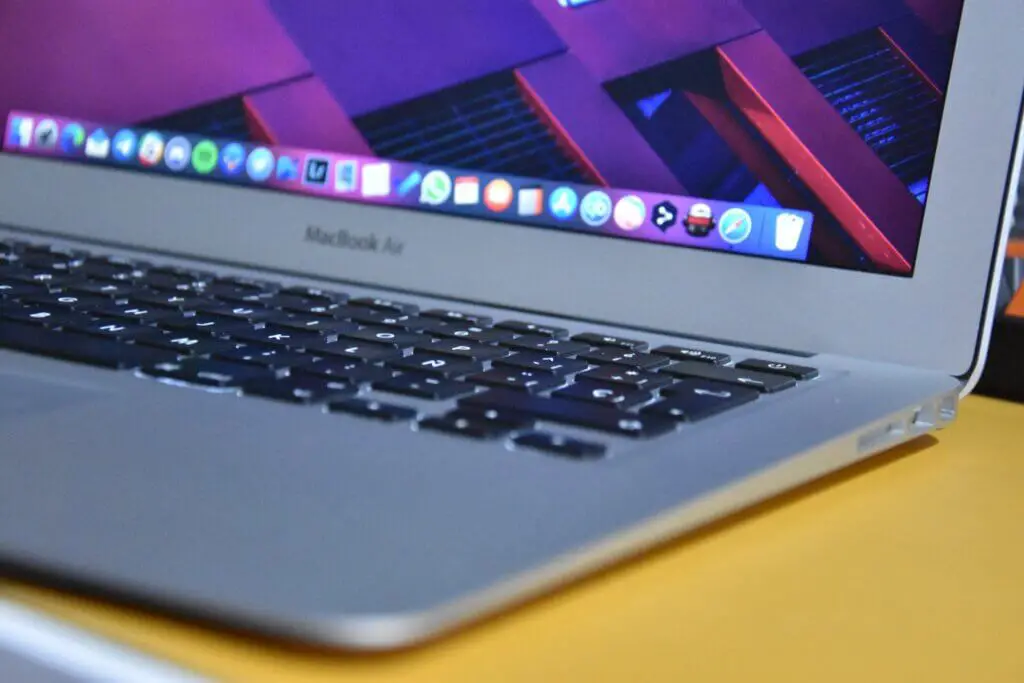ShadowVault macOS malware is like the party crasher nobody invited, but it still managed to sneak in.
Just when you thought your Mac was safe from all those pesky digital threats out there… Surprise!
This uninvited guest isn’t just here for the free food and music. No, ShadowVault has a more sinister agenda.
The ShadowVault macOS malware is specifically designed to steal passwords, cryptocurrency, and credit card data right under our noses.
Unmasking the ‘ShadowVault’ macOS Malware
The cybersecurity landscape is constantly evolving, and a new player has recently entered the arena: ShadowVault malware. This malicious software isn’t just any ordinary threat; it’s specifically created to target macOS systems.

Unfortunately, ShadowVault is real. One thing that sets ShadowVault apart from other forms of malware Apple users may encounter is its keylogging techniques.
Capturing Keystrokes with Keylogging Techniques
Picture this: whenever you type on your keyboard to enter a password or make an online purchase, someone could capture those keystrokes without triggering antivirus alerts. That’s what we’re dealing with when talking about ‘Shadowvault.’
This stealthy intrusion into personal devices highlights why consumers must stay informed about emerging threats such as these sophisticated operations targeting macOS 13 operating systems, among others.
Awareness can serve as our first line of defense against unauthorized access by preventing us from becoming easy targets for these cyber thieves. So let’s keep ourselves updated because knowledge truly is power in today’s digital age.
The Stealthy Distribution Methods of ‘ShadowVault’
Understanding sneaky cyber threats like the ShadowVault malware is crucial in combating them effectively. These cunning culprits can breach macOS systems by exploiting deceptive websites and fake software updates. Being aware of their tactics is essential in staying one step ahead.
Recognizing Fake Software Updates
Fake software updates are these digital thieves’ favorite trick in the book. They often appear as urgent pop-ups on shady websites or alarming emails that insist you need an immediate system update.
To guard yourself against such deception, familiarize yourself with how real OS updates operate. Apple releases security patches directly via System Preferences on your Mac – anything outside this platform smells fishy.

If any so-called “update” requests personal info or payment details, raise those red flags. A genuine Apple developer never asks for such data during an update process.
Last but not least, when updating your system, ensure you’re connected securely—HTTPS protocol should be present in website URLs instead of HTTP, which lacks encryption and could leave you vulnerable to unauthorized access by pesky hackers looking for their next victim.
Peeling Back the Layers of ‘ShadowVault’s’ Advanced Obfuscation Techniques
‘ShadowVault,’ this sneaky macOS malware, is not just another cyber threat. This devious malware has some sly methods up its sleeve, making it a difficult foe even for the most sophisticated antivirus software.
Dodging Antivirus Software Like A Pro
The crafty ShadowVault uses advanced obfuscation techniques to slip past your security measures undetected. One such technique involves cleverly disguising malicious code to appear harmless or unrecognizable to conventional antivirus solutions.
This means standard antivirus tools may fail in their mission against threats as stealthy and complex as ShadowVault because they can’t recognize new or altered versions of known threats. And if you think that’s cunning, wait until you hear about its other deceptive strategies.
In addition to code obfuscation, our slippery foe employs encryption algorithms and packing techniques to hide its true intent until execution time on the victim’s system. This allows the malware to lie low and invisible until activated, bypassing many real-time protection mechanisms that most Mac security software offers.
Data Exfiltration – The Art of Cyber Theft
Imagine this: you’re a cybercriminal, and your canvas is the unsuspecting user’s computer. Your paintbrush? A malware named ‘ShadowVault.’ You meticulously craft your masterpiece by siphoning valuable data from their system to remote servers under your control.
Cashing in on Stolen Masterpieces
The dark web acts as an underground auction house for these stolen masterpieces. Credit card details are traded here like rare paintings; passwords become priceless sculptures. As the BBC explains about the dark web, it’s all anonymous, with no traceable footprints left behind.
But selling isn’t always enough. Why not use that shiny new credit card number or bank login credentials directly? Unauthorized purchases and draining accounts can be just as profitable (and thrilling) for our hypothetical cyber Picasso.
This peek into the mind of a hacker gives us insight into why cybersecurity measures against threats like ‘ShadowVault’ aren’t just optional add-ons but essential tools for protecting our digital lives. We need more than Mac security software—we need sophisticated covert operations guarding against unauthorized access at every turn.
Shielding Your macOS from ‘ShadowVault’ and Other Nasty Threats
For optimal Mac health, regular Apple updates are a must. As Macworld suggests, here are some practical ways to keep threats like ShadowVault at bay.
Fake Software Updates: Don’t Fall for It
Picture this. You’re browsing online when an alert suddenly prompts you to install a critical system update. Beware. This could be malware in disguise, such as our notorious friend ShadowVault.
- Verify any software or OS updates directly via Apple Menu > System Preferences > Software Update.
- Avoid downloading anything from pop-up ads on websites or email links. Legitimate updates will never come knocking through these channels.
Maintaining Up-to-Date Systems: A Strong Fortress Against Intruders
You wouldn’t leave your house unlocked while going out of town, would you? Similarly, leaving your operating system outdated is akin to inviting hackers for dinner.
- To secure systems, ensure they run on the latest versions by regularly installing patches released by Apple Developer.
- Besides keeping tabs on macOS 13 (or later) releases, don’t forget about application-specific ones; companies often release security patches after discovering vulnerabilities.
FAQs in Relation to Shadowvault macOS Malware
What is ShadowVault?
ShadowVault is a new strain of macOS malware designed to steal sensitive data, including passwords, cryptocurrency keys, and credit card information.
I’m a hacker—where can I get Shadowvault?
ShadowVault is a “malware as a service” (MaaS) tool, which means that it is rented out to cybercriminals who want to steal data from macOS users. The malware is priced at $500 monthly and is available on the dark web.
What is the new malware designed on macOS?
The latest reported malware targeting macOS users is called “ShadowVault.” It uses advanced obfuscation techniques to evade antivirus detection and steals valuable user data.
How do I check for malware on my Mac apps?
You can use reliable security software that scans your system regularly. Also, watch for unusual behavior in your apps or sudden slowdowns in performance: contact 37SOLUTIONS, LLC for help cleaning your computer remotely.
How common is macOS malware?
Mac viruses are uncommon but just as serious as Windows viruses. Macworld states that macOS malware is less prevalent than Windows threats, and its frequency has increased over the years.
Stay safe
ShadowVault macOS malware is the uninvited guest in our digital lives, stealing passwords, cryptocurrency, and credit card data.
This stealthy threat uses sophisticated obfuscation techniques to evade antivirus detection. It’s a master of disguise.
It’s always lurking around the corner, distributed through malicious websites and fake software updates.
The stolen information doesn’t just vanish into thin air—it ends up on remote servers controlled by attackers who profit from your loss.
But don’t despair! There are ways to protect yourself against ShadowVault and similar threats. Keep your operating system updated, use reliable security software, and be cautious when downloading or visiting new sites…
You can fight back!
has all you need to stay informed about such threats, as well as reviews, guides, and tips on computers, laptops, gadgets, consumer electronics, software security, etc. Stay ahead of cybercriminals. Knowledge is power!



